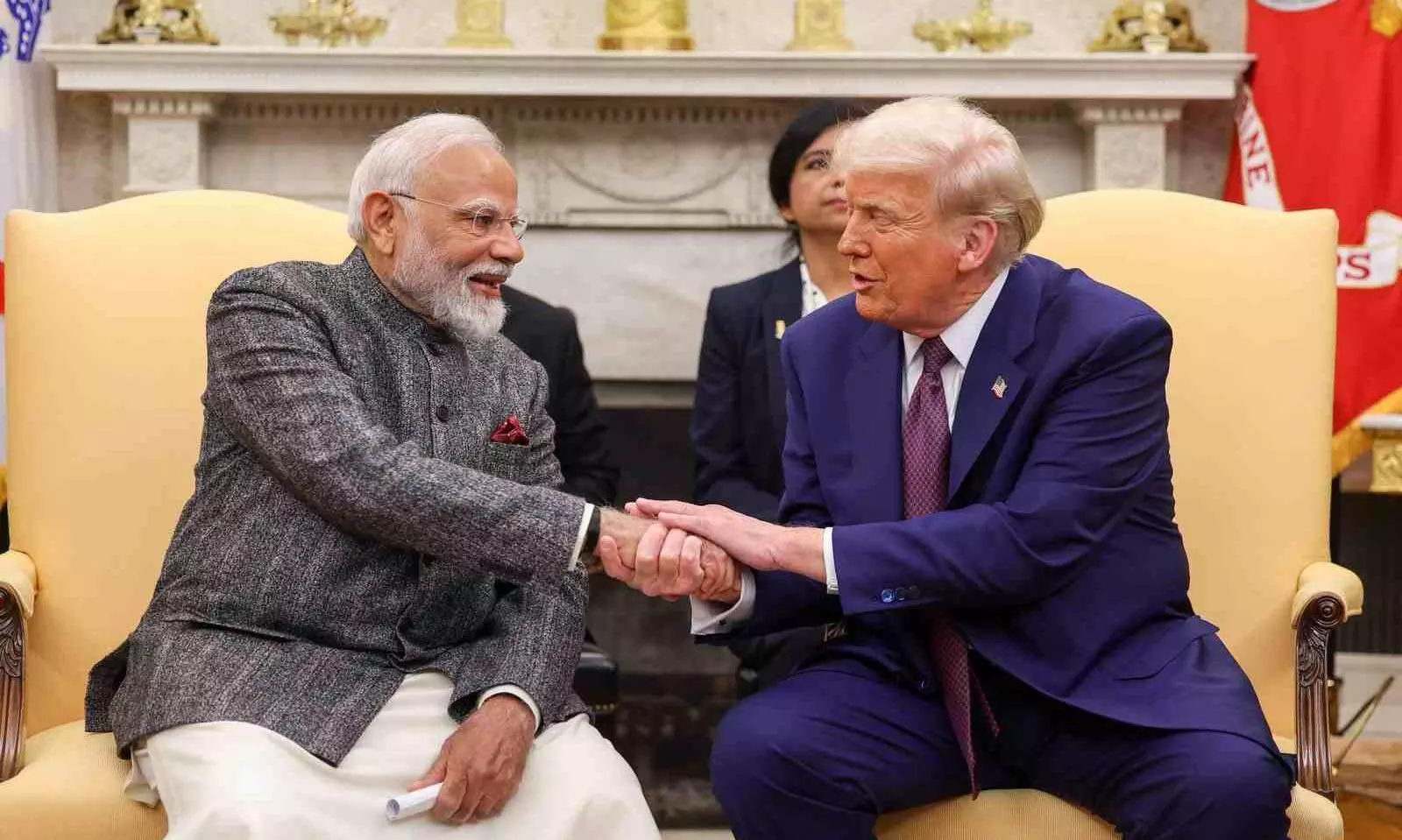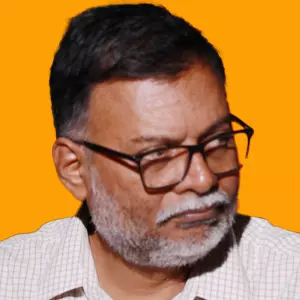
- Home
- India
- World
- Premium
- THE FEDERAL SPECIAL
- Analysis
- States
- Perspective
- Videos
- Sports
- Education
- Entertainment
- Elections
- Features
- Health
- Business
- Series
- In memoriam: Sheikh Mujibur Rahman
- Bishnoi's Men
- NEET TANGLE
- Economy Series
- Earth Day
- Kashmir’s Frozen Turbulence
- India@75
- The legend of Ramjanmabhoomi
- Liberalisation@30
- How to tame a dragon
- Celebrating biodiversity
- Farm Matters
- 50 days of solitude
- Bringing Migrants Home
- Budget 2020
- Jharkhand Votes
- The Federal Investigates
- The Federal Impact
- Vanishing Sand
- Gandhi @ 150
- Andhra Today
- Field report
- Operation Gulmarg
- Pandemic @1 Mn in India
- The Federal Year-End
- The Zero Year
- Science
- Brand studio
- Newsletter
- Elections 2024
- Events
- Home
- IndiaIndia
- World
- Analysis
- StatesStates
- PerspectivePerspective
- VideosVideos
- Sports
- Education
- Entertainment
- ElectionsElections
- Features
- Health
- BusinessBusiness
- Premium
- Loading...
Premium - Events

A term limit is mainly intended to reduce the possibility of an elected leader from subverting institutions, and by extension, democracy itself
There has been much speculation over whether President Donald Trump will somehow try his luck for a third term in 2028, something explicitly barred by the United States Constitution. A few days ago, Trump appeared to concede that it would be difficult to override the US’s presidential term limit but indicated he is still leaving the possibility open.
Much of the world, including large sections of Americans themselves, are outraged by several decisions of the Trump administration – reciprocal and punitive tariffs against other nations, ruthless targeting of even legal migrants, sending troops to opposition-ruled states and layoff of thousands of federal government staff, to name a few. The only saving grace, for many, is that Trump’s term will end in 2028 with no scope of re-election as of now. But the last word is yet to be said on this.
Also read: Trump talks of G2, but dual global hegemony is whimsy for now
Trump last week was quoted by US media as saying “too bad” he wouldn’t be able to contest in response to the Speaker of House of Representatives saying he did not see a way to amend the Constitution. Yet Republicans like Randy Fine of Florida have tried to keep the possibility alive by suggesting, among other things, that the Constitution be amended to enable Trump to contest for a third time.
Is term limit relevant for India?
The concept of a presidential term limit is relevant to all democracies. As it stands now, such limits are confined largely to presidential or semi-presidential systems of government. Except for a handful of nations, presidential term limits are practised across Latin America and Africa.
In this context, it is worth exploring whether it would be relevant for India and for its parliamentary system.
Interestingly, there have been suggestions in the past to shift to a presidential form of government but few appear to have felt the need to propose term limits on elected officials – including the prime minister and chief minister of states.
Also read: If Qatar, China and Norway can be mediators, why not India?
In India, the prime minister is the most powerful constitutional authority while the role of president, for all practical purposes, is to ratify decisions of the Union Cabinet, and Parliament. So, the term limit must apply to the prime minister. It doesn’t matter that people vote a political party to power and that party chooses its leader who then becomes the prime minister.
Former prime minister Indira Gandhi’s declaration of Emergency in 1975 during her second term, showed that India’s parliamentary democracy was not insulated against subversion.
In a democracy set up of any variety, power should reside with institutions rather than on individuals. A term limit is mainly intended to reduce the possibility of an elected leader from subverting institutions, and by extension, democracy itself. A long stint in office is fertile ground for any individual to manipulate the system to his or her advantage.
Not that a procedure akin to term limit is alien to India. In the case of the bureaucracy, and in the banking sector, it is common for rotation among officials either from one department to another, or from one location to another – in a given timeframe. This is with the stated intention of preventing vested interests from taking over, instituting transparency, preventing fraud etc.
Minimising risk of personal aggrandisement
A term limit for the prime minister and chief ministers, say upto two terms in office, among other things can similarly help minimise the risk of personal aggrandisement.
Former prime minister Indira Gandhi’s declaration of Emergency in 1975 during her second term, showed that India’s parliamentary democracy was not insulated against subversion. The current dispensation under Prime Minister Narendra Modi too, in power for a third term since 2014, has been charged by Opposition parties of diluting democratic norms, particularly from the second term onwards.
Also read: India–US defence framework: A hollow renewal amid shifting alliances
The same situation largely replicates in states too, where individual chief ministers in power for long can develop vested interests to the detriment of democracy.
But the experience of countries that already have term limits has been mixed. In the US, it’s for the first time that the system has come under challenge – by Trump. For a long time the term limit was by convention rather than by law. This came about when its first president George Washington voluntarily refused a third term.
Franklin Roosevelt was the only President who contested more than two terms (1933-45) – largely due to the Second World War. In 1951, the two-term limit was legalised through the 22nd amendment to the US Constitution. Trump and his aides are now figuring out how to get round this obstacle.
Can Trump contest for V-P?
One suggestion is for Trump to contest as vice-president. After the elections, the newly-elected president retires and Trump takes over as president. But it appears that the 12th Amendment explicitly bars an individual from holding any constitutional position after two terms as president.
Reports quoting legal experts say "no person constitutionally ineligible to the office of president shall be eligible to that of vice-president of the United States". If this is so, it disqualifies Trump from contesting for the post of vice-president.
Also read: In Busan, how Xi outplayed Trump in the long game for global power
Another argument the Trump camp argues is that the law implies no two “successive” terms in which case he will be eligible for one more – since there was a break between the first and second. Even if the law is clear on this, his associates say this proviso is still challengeable.
Will term limits work in parliamentary democracies like India? Prima facie, the system appears reasonable as it prevents power from being concentrated in the hands of a few.
But it is not Trump alone who has tried to circumvent the term limit. In other nations with similar term limits attempts have been made to extend the rule of a particular president, with some degree of success. The Russian Constitution had a similar proviso – no more than two terms (eight years) as president. Vladimir Putin who completed two terms as president (2000-2008) contested as vice-president with Dmitry Medvedev as president. A series of Constitutional amendments, including increasing the president’s term to six years from four, enabled Putin to return to power in 2012 and 2018.
14 nations evade term limits
The amendments were done in a way it would not affect Putin’s continuity in office. So now, the two-term limit continues in an amended form, effective from 2024 onwards, which means Putin can continue to be president until 2036.
Another classic case was Venezuela under Hugo Chavez (1998-2013). When he came to power the country had a term limit of six years and two terms for its president. After his proposal to abolish term limits failed once in 2007, the second time two years later he was successful. The law was amended and validated by a national referendum. But he could not enjoy his unbridled presidential term as he died of cancer in 2013.
In Africa too, presidents have tried to get round term limits. The latest one is Kenya where the proposal was to increase a presidential term to seven years. But it proved unsuccessful following widespread public protests. Now, there is speculation whether its president William Ruto is planning to bring in legislation to remove the two-term limit of five years each that will enable him to contest in the next elections, scheduled for 2027.
According to the Africa Center for Strategic Studies, in the last 10 years, the ruling elite of at least 14 nations have managed to evade term limits. These include Egypt, Uganda, Rwanda and Algeria.
Will term limits work in parliamentary democracies like India? Prima facie, the system appears reasonable as it prevents power from being concentrated in the hands of a few. But the realistic question is whether any ruling dispensation will initiate the move that is self-limiting and goes against the interests of those already in power.
Even if term limit is proposed, it could be framed in a manner so as to not to affect the incumbent government but to be implemented prospectively.


